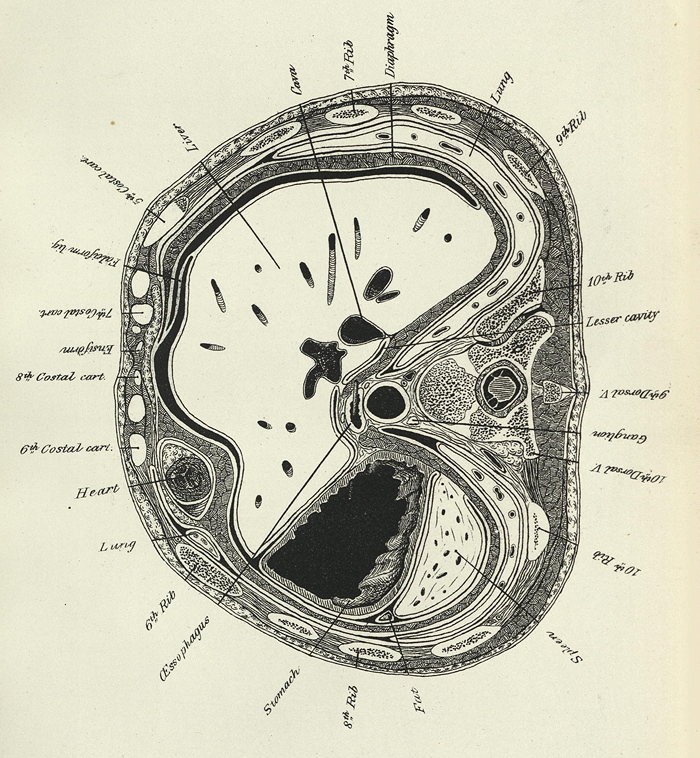Frozen Sections of a Child
Back in 1881, Dr. Thomas Dwight of Harvard Medical School authored Frozen Sections of a Child, which sounds like the kind of book one might find in the library of a serial killer. As the title indicated, the book consisted of anatomical illustrations of frozen cross-sections of a three-year-old child.
In the preface, Dwight helpfully included advice for those readers who might want to create their own frozen sections of a child:
More details: Harvard's Countway Library. You can also read the full book online via Google Books.

In the preface, Dwight helpfully included advice for those readers who might want to create their own frozen sections of a child:
My experience with frozen sections enables me to offer the following directions for making them. First, be very sure that the body, or part, to be frozen is in precisely the position you desire, and that there are no folds or indentations in the skin. I always use natural cold when possible. Weather much about zero (Fahrenheit) is unsatisfactory; but if the part is thoroughly chilled by several days' exposure to a pretty low temperature, a night of 10° may possibly finish it. Salt and ice, or snow, no doubt, will answer the purpose, but much time and patience are required. It is essential that the melted ice should have a chance to run off. The body should be frozen like a rock—so much so that the operator cannot tell whether he is cutting bone or muscle. Tooth is the only tissue he should be able to recognize. The sections should be made in a cold room, with a very sharp saw that has been chilled. When a section is cut, its surface is obscured by a thick half-frozen saw-dust, which is doubly thick if the freezing is not quite sufficient. It is wisest, if time allows, to remove this at once, which is done by pouring a little hot water over the section and brushing or scraping it off rapidly and carefully. This is a very delicate part of the process, and its successful performance has much to do with the beauty of the specimen. If it is to be kept, it should be laid on a piece of glass or wood, and placed at once, while still frozen, in cold alcohol.
More details: Harvard's Countway Library. You can also read the full book online via Google Books.

Comments
Commenting is not available in this channel entry.

Category: Body | Surgery | Books | Nineteenth Century